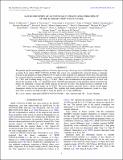| dc.contributor.author | Krivonos, Roman A. | |
| dc.contributor.author | Tsygankov, Sergey S. | |
| dc.contributor.author | Lutovinov, Alexander A. | |
| dc.contributor.author | Tomsick, John A. | |
| dc.contributor.author | Chakrabarty, Deepto | |
| dc.contributor.author | Bachetti, Matteo | |
| dc.contributor.author | Boggs, Steven E. | |
| dc.contributor.author | Chernyakova, Masha | |
| dc.contributor.author | Christensen, Finn E. | |
| dc.contributor.author | Craig, William W. | |
| dc.contributor.author | Fürst, Felix | |
| dc.contributor.author | Hailey, Charles J. | |
| dc.contributor.author | Harrison, Fiona A. | |
| dc.contributor.author | Lansbury, George B. | |
| dc.contributor.author | Rahoui, Farid | |
| dc.contributor.author | Stern, Daniel | |
| dc.contributor.author | Zhang, William W. | |
| dc.date.accessioned | 2015-11-13T15:05:59Z | |
| dc.date.available | 2015-11-13T15:05:59Z | |
| dc.date.issued | 2015-08 | |
| dc.date.submitted | 2015-05 | |
| dc.identifier.issn | 1538-4357 | |
| dc.identifier.issn | 0004-637X | |
| dc.identifier.uri | http://hdl.handle.net/1721.1/99917 | |
| dc.description.abstract | We present spectral and timing analyses of Nuclear Spectroscopic Telescope Array (NuSTAR) observations of the accreting X-ray pulsar 2RXP J130159.6–635806. The source was serendipitously observed during a campaign focused on the gamma-ray binary PSR B1259–63 and was later targeted for a dedicated observation. The spectrum has a typical shape for accreting X-ray pulsars, consisting of a simple power law with an exponential cutoff starting at ~7 keV with a folding energy of E[subscript fold] ≃ 18 keV. There is also an indication of the presence of a 6.4 keV iron line in the spectrum at the ~3σ significance level. NuSTAR measurements of the pulsation period reveal that the pulsar has undergone a strong and steady spin-up for the last 20 years. The pulsed fraction is estimated to be ~80%, and is constant with energy up to 40 keV. The power density spectrum shows a break toward higher frequencies relative to the current spin period. This, together with steady persistent luminosity, points to a long-term mass accretion rate high enough to bring the pulsar out of spin equilibrium. | en_US |
| dc.language.iso | en_US | |
| dc.publisher | IOP Publishing | en_US |
| dc.relation.isversionof | http://dx.doi.org/10.1088/0004-637x/809/2/140 | en_US |
| dc.rights | Article is made available in accordance with the publisher's policy and may be subject to US copyright law. Please refer to the publisher's site for terms of use. | en_US |
| dc.source | IOP Publishing | en_US |
| dc.title | NuSTAR DISCOVERY OF AN UNUSUALLY STEADY LONG-TERM SPIN-UP OF THE Be BINARY 2RXP J130159.6–635806 | en_US |
| dc.type | Article | en_US |
| dc.identifier.citation | Krivonos, Roman A., Sergey S. Tsygankov, Alexander A. Lutovinov, John A. Tomsick, Deepto Chakrabarty, Matteo Bachetti, Steven E. Boggs, et al. “NuSTAR DISCOVERY OF AN UNUSUALLY STEADY LONG-TERM SPIN-UP OF THE Be BINARY 2RXP J130159.6–635806.” The Astrophysical Journal 809, no. 2 (August 19, 2015): 140. © 2015 The American Astronomical Society | en_US |
| dc.contributor.department | Massachusetts Institute of Technology. Department of Physics | en_US |
| dc.contributor.department | MIT Kavli Institute for Astrophysics and Space Research | en_US |
| dc.contributor.mitauthor | Chakrabarty, Deepto | en_US |
| dc.relation.journal | The Astrophysical Journal | en_US |
| dc.eprint.version | Final published version | en_US |
| dc.type.uri | http://purl.org/eprint/type/JournalArticle | en_US |
| eprint.status | http://purl.org/eprint/status/PeerReviewed | en_US |
| dspace.orderedauthors | Krivonos, Roman A.; Tsygankov, Sergey S.; Lutovinov, Alexander A.; Tomsick, John A.; Chakrabarty, Deepto; Bachetti, Matteo; Boggs, Steven E.; Chernyakova, Masha; Christensen, Finn E.; Craig, William W.; Fürst, Felix; Hailey, Charles J.; Harrison, Fiona A.; Lansbury, George B.; Rahoui, Farid; Stern, Daniel; Zhang, William W. | en_US |
| dc.identifier.orcid | https://orcid.org/0000-0001-8804-8946 | |
| mit.license | PUBLISHER_POLICY | en_US |
| mit.metadata.status | Complete | |
